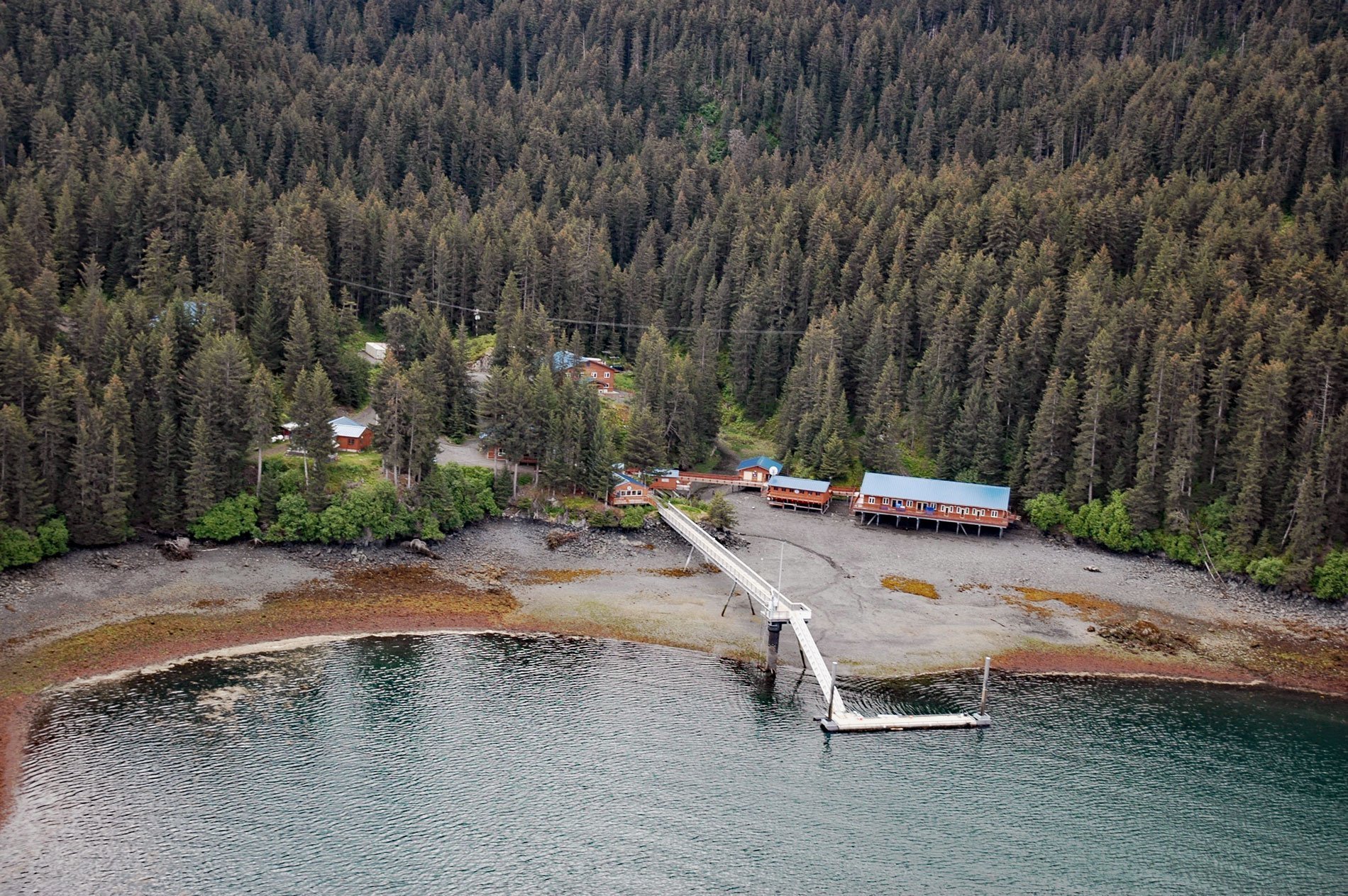Kasitsna Bay Laboratory is a marine research facility located on a shallow embayment about 1.2 miles (1.9 km) wide, about 12 miles (19 km) south of Homer and 6.3 miles (10 km) northeast of Seldovia, Alaska. The name is from the Dena’ina language and was originally published in 1883 as “Kahsitsnah” by William Healey Dall. Kasitsna Bay was homesteaded by the Ekren family around 1950. The family had a fish trap at Nubble Point and they started a cannery in 1955 called the Ekren Packing Company that processed clams, salmon, and Dungeness crabs until 1975.
Research at Kachemak Bay can be traced back to 1957 when the Bureau of Commercial Fisheries began studying shellfish in the bay. To support these research activities a small year-round field station was constructed in 1960 on 27 acres (11 ha) of waterfront property. The site was chosen for shellfish research because of its accessibility to clean saltwater and close proximity to year-round commercial fisheries for king, Tanner, and Dungeness crabs, as well as shrimp, salmon, and halibut. Early research focused on the life history, population dynamics, and behavior of pandalid shrimp in the Gulf of Alaska that informed annual catch limits in Kachemak Bay. In 1978, changes in research priorities and problems associated with logistics led to the transfer of research activities to the Northwest and Alaska Fisheries Lab in Kodiak. The National Oceanic and Atmospheric Administration retained ownership of the Kasitsna Bay property, and the facility was used by the Outer Continental Shelf Environmental Assessment Program. In 1981, the University of Alaska began using the remote field station to support graduate student research.
In 1999, Kachemak Bay was designated as a unit in the National Estuarine Research Reserve Program, and soon afterward administration of the Kasitsna Bay Lab was transferred to the National Centers for Coastal Ocean Science. Over $12.5 million in Congressional appropriations provided funding for renovations and new construction at the facility. It is now used primarily by the University of Alaska Fairbanks for studies of subtidal, intertidal, and terrestrial ecology. Kachemak Bay is an ideal study area since the ecological richness is particularly susceptible to effects associated with the development and climate change such as increasing ocean acidity, and decreasing salinity caused by higher precipitation and increasing glacial runoff. Read more here and here. Explore more of Kasitsna Bay Lab here:

